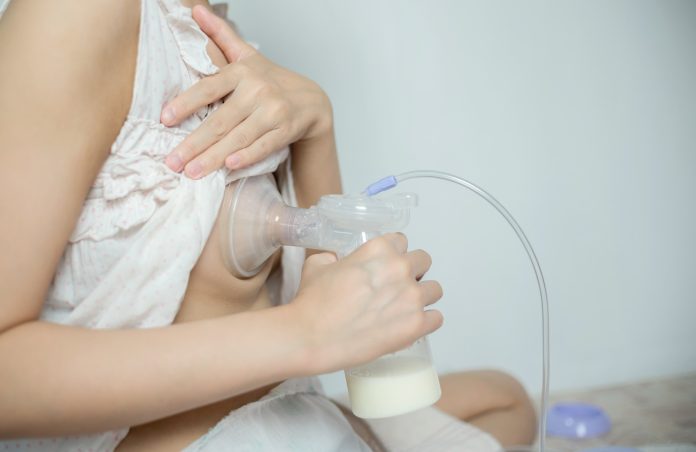A breast pump is a device that mimics your baby’s sucking action to help stimulate milk production and empty the breasts. Choose a single-use or multiple-use pump that comes with clean, sterile equipment.
Powered pumps plug into an electrical outlet or batteries, and have a control panel that lets you select different settings. They also have a milk container that collects your milk.
What is a breast pump?
A breast pump is a machine that helps you express and store your milk. It has a breast shield that fits over your nipple (areola) and a flange that fits around your nipple opening (also called the nipple valve). It also has a pump that creates a vacuum to suction out the milk and a detachable container for collecting the expressed milk.
Powered pumps plug into an electrical outlet or use batteries. They come in single-use models that work on one breast at a time, or double-use pumps that operate on both breasts at once.
Most power pumps have settings that mimic a nursing baby, including a let-down mode that starts the release of milk after you stimulate the nipple area. Some also have a timer that shuts off the machine after a set amount of time. It’s important to read the instruction manual and follow manufacturer recommendations for cleaning and disinfecting your pump. It’s generally not safe to share multiple-use pumps, even with family or friends, because they can contain germs that can cause infections.
Single-use pumps
The global single-use pumps market is anticipated to witness a flourishing growth during the forecast period. The major driving factor for this market is the growing R&D investments in biopharma products in developing & emerging economies.
Single-use pumps eliminate traditional cleaning expenses & enable fast batch changeovers. In addition to this, they offer a high level of product purity & sterility which reduces cross-product contamination and ensures higher production capacity.
These pumps are made from polyethylene & have excellent corrosion resistance to hostile liquids & chemicals. They also feature leak-free & dry/wet suction lift operation.
The unique design of these pumps incorporates a housing with an integral membrane & rotor with a plurality of cavities. The rotor is an interference fit in the housing membrane, allowing the bolus of liquid to be transported around the pump by a spring barrel & seal. This arrangement eliminates the need for multiple moving parts, reduces heat generation & provides low-pulsation & leak-free operation.
Powered pumps
A pump is used to transfer liquids or gases from one place to another. They are used in the construction industry for building materials and operating HVAC systems, as well as industrial applications such as chemical movement, sewage movement, water drainage, and even in space shuttles to provide pressurized water to astronauts.
For breastfeeding moms, a powered pump can be helpful to increase milk supply when baby isn’t nursing enough or the mother experiences a drop in milk production. Power pumping sessions can last as long as an hour and may be needed for up to a week to see results.
Hand pumps, such as the Afridev pump, are cheap and easy to build and maintain using simple parts. This type of pump improves access to safe water in resource-poor countries by allowing users to lift groundwater from underground reservoirs for drinking, cooking, and washing.
Manual pumps
A manual breast pump is usually less technical and more affordable than an electric model. They work by relying on suction and a simple design (container, flange and handle) that allows mom to use it hands-free or with a bra strap if desired. There are also usually fewer tubing and other accessories to wash between pumping sessions.
These pumps are great for breastfeeding and pumping moms who don’t plan to express more than once or twice per day. They’re also good for capturing milk that would otherwise be wasted during nursing, and can help alleviate nipple pain from engorgement.
Some of these models are also able to pass the Zoom test, meaning other people shouldn’t be able to hear you pumping!




